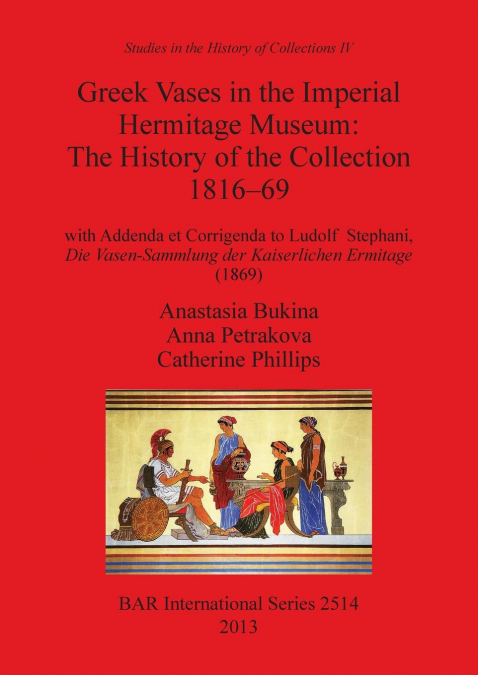
Anastasia Bukina / Anna Petrakova / Catherine Phillips
Prólogo1 Regreso al bosque2 El libro abierto3 ¡Ii-jai!4 Capturados5 Llamas en la oscuridad6 El guerrero de la sombra7 Hacia el este8 El río helado9 Ratón a la carrera10 Buenas noches, Mini
with Addenda et Corrigenda to Ludolf Stephani, Die Vasen-Sammlung der Kaiserlichen Ermitage (1869)The Hermitage Museum in St Petersburg has one of the world's great collections of Greek vases. In addition to the numerous vases and fragments found on Russian territory, it includes those found in Italy and acquired directly or purchased from other collectors, most notably the Marquis Campana, Antonio Giuseppe Pizzati and Countess Laval. The history of this part of the Hermitage collection of vases has never before been told in full. Taking Ludolf Stephani's catalogue of 1869, Die Vasensammlung der Kaiserlichen Ermitage, as a starting point and studying a vast body of previously ignored archive documents, the authors (two of them curators of Greek vases in the Hermitage Museum) follow the formation of the collection up to 1869, establishing its sources and identifying a number of previously under-estimated or ignored Russian collectors of antiquities. The Hermitage collection is set not only within the Russian cultural context but within the wider picture of a pan-European interest in antiquities and their display. Since Stephani's catalogue is still the main source for scholars of vases and vase collections, the book includes a valuable list of addenda and corrigenda to the provenances he provides for vases from private collections (those found during excavations on Russian territory are largely correct).